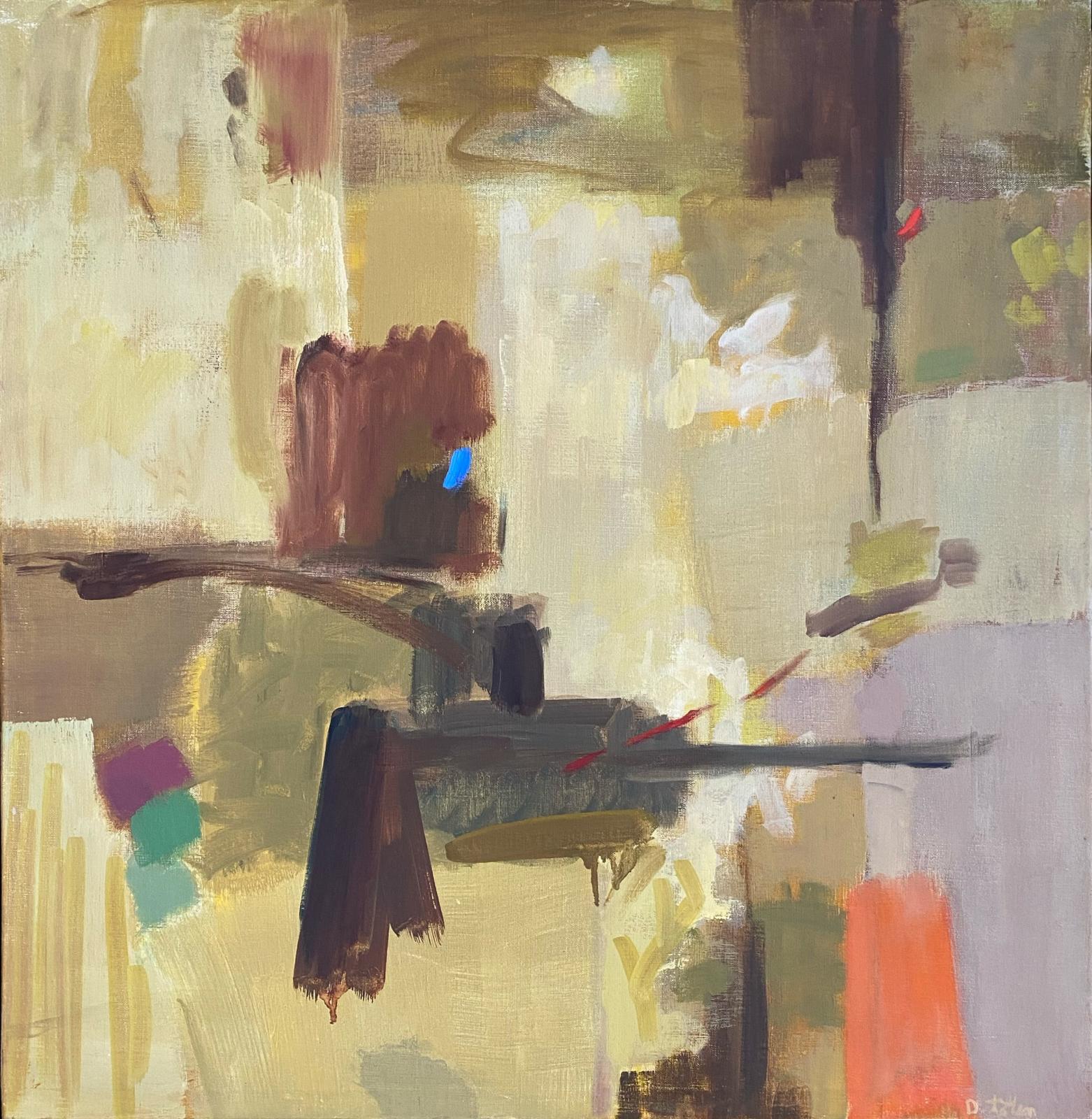












Framed: 26 3/4 x 26 inches
artist
1961 marks a pivotal moment in Totten’s career, departing from the subdued desert-inspired color palette that had characterized his previous work to embrace a more flamboyant and adventurous aesthetic, embarking on a creative exploration that resonated with the buoyant spirit of the era. This marked shift coincided with Totten’s deepening engagement with Synchromism, a movement spearheaded by Stanton MacDonald-Wright, under whose tutelage Totten had studied. Drawing inspiration from MacDonald-Wright, Totten absorbed the foundational principles of Synchromism, yet he always approached them as a catalyst for his own distinctive artistic vision.
Totten’s artistic process appears deceptively effortless, mirroring the demeanor of the man behind the brush. Modest, soft-spoken, and gentle, Totten embodied humility in his approach to his craft. Yet, beneath this unassuming exterior lay a profound commitment to his artistry. Immersed in the act of painting, Totten dedicated himself wholeheartedly to his practice, infusing each canvas with a palpable sense of daring and conviction.
To liken Totten’s oeuvre to that of luminaries such as Clifford Still or Edward Dugmore may seem audacious at first glance, however, upon closer examination, one discerns a shared mastery of abstract expressionism and a profound depth of artistic expression. Totten stands shoulder to shoulder with these titans, his capacity to produce profound abstract works attesting to his enduring legacy as a visionary artist.
Description
While Totten’s references to nature are evident—albeit in semi-recognizable abstract form—this work represents a deeper exploration into the emotional essence of a place. Rather than focusing solely on the literal depiction of natural forms, Totten delves into the atmosphere and feeling of the environment. The brushwork in this painting is notably loose and expressive, which enhances the luminosity and contributes to the overall vibrancy of the composition.
The composition itself is both well-structured and balanced, reflecting Totten’s skillful handling of abstraction. Despite the immediate nature of the work, it maintains a sense of order and coherence and stands out as one of Totten’s most genuinely abstract creations, even within his oeuvre, which is renowned for its exploration of the form.
Don Totten, born in Vermillion, South Dakota, in 1903, exhibited early talent in visual storytelling. He pursued formal art education at the Otis Art Institute in California, studying under post-impressionist painters Roscoe Schraeder and Edouard Vysekal, gaining expertise in color theory and composition.












